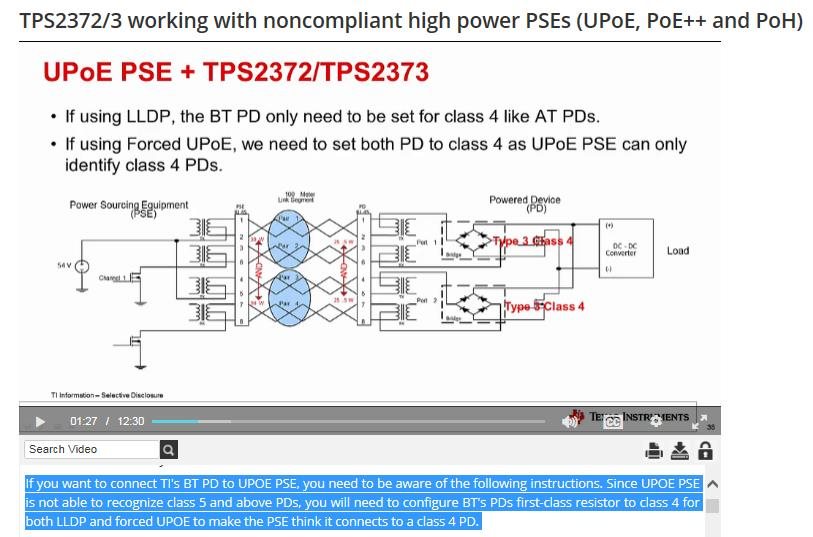Other Parts Discussed in Thread: TPS23756, TPS2372
Hi Team,
Our customer use UPoE PSE injector as source of TPS2373, but this cannot work.
Further more, this UPoE injector work well with TPS23756.
1. For UPoE sourcing, TPS2373 should work as class4 PD, am I right?
2. Where TI recommend that I can look into?
Best regards,
C.T.



